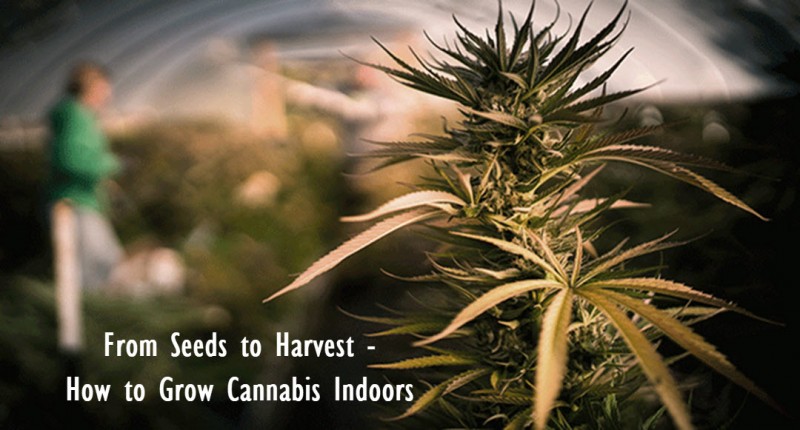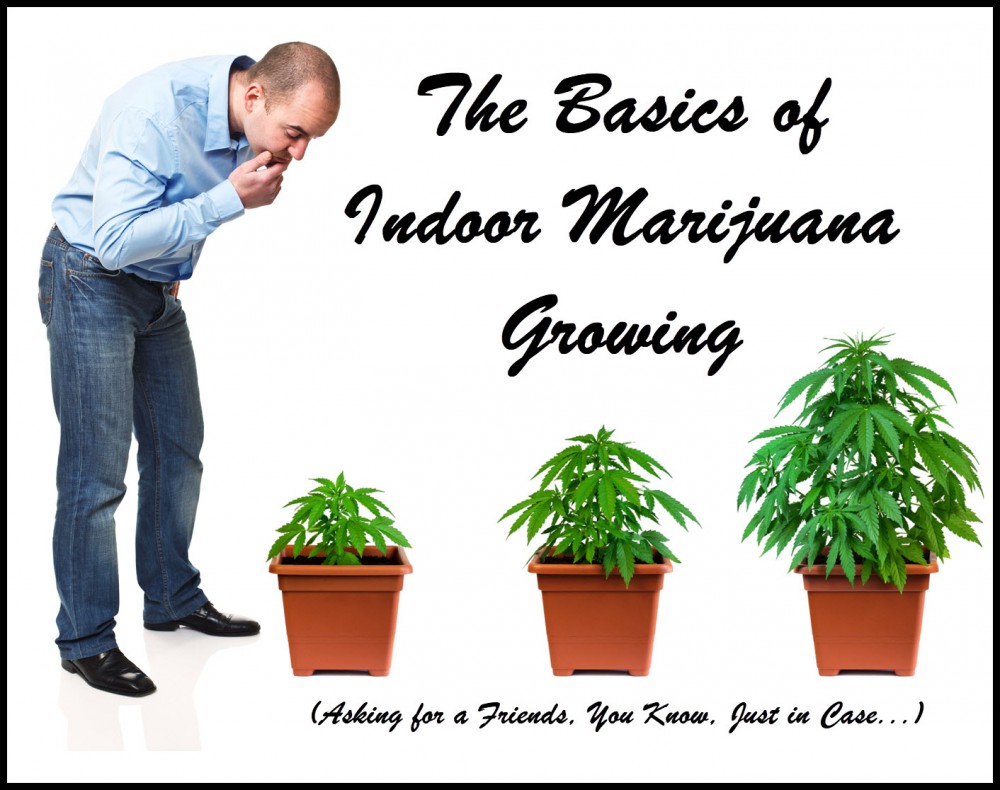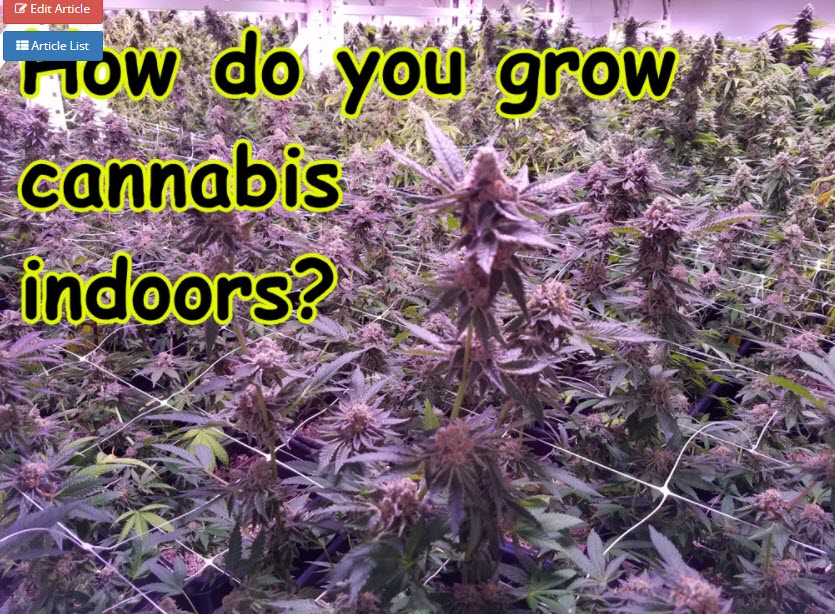How to Grow Cannabis Indoors - A Guide to Indoor Marijuana Growing
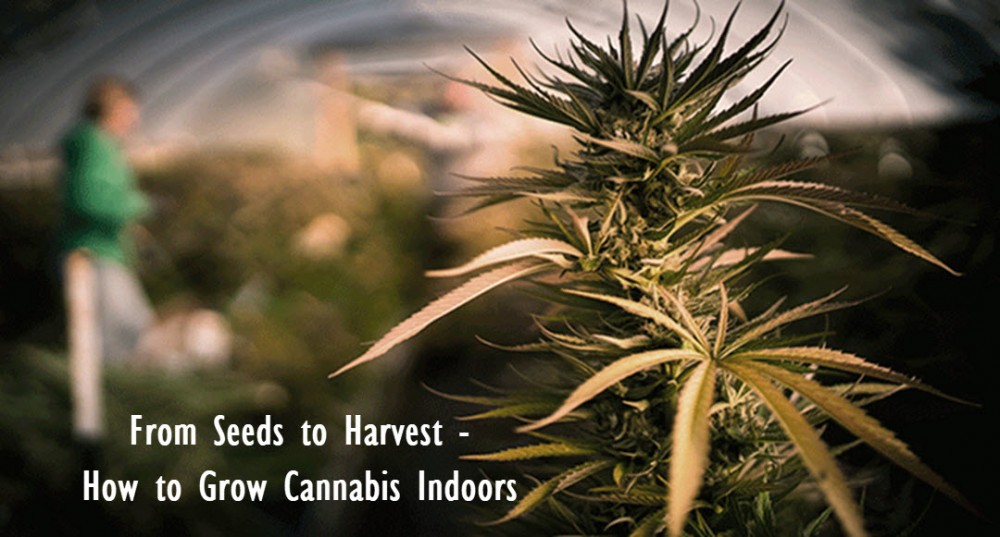
Hooray!! Legal cannabis is becoming almost the next thing not just in the United States, but in other peer states around the world as well. Although not legal in most of Europe, most countries have relaxed laws with at least some level of tolerance for the same.
You have decided to grow your cannabis, indoors, well done! You are already part of an amazing and rapidly growing industry. Congratulations on being part of a phenomenon sweeping round the world; homegrown marijuana. Growing your cannabis is fun. It is one of the most inexpensive ways of getting that high-quality bud you’ve always wanted. But before flexing, understanding the growth of marijuana and its unique challenges is vital. The volume of information available alone can be overwhelming for a starter.
This easy-to-digest, clear guide to the indoor growing of cannabis can help you make sense of the sheer volume of information available on the matter. We will walk you through all the stages of cannabis growing and highlight some of the important particulars that will help you maximize the quality and quantity of your harvest.
What Should I Consider?
Genetics
Just as a fancy word for seeds, genetics are perhaps the most important start to good cannabis growing. Getting this right plays a major role in how the whole process takes shape. Genetics could also mean cannabis clones, but seeds are easier to source especially for starters. Sativa, rueralis, indica, among other hybrids are available at various legally certified outlets. What’s that strain that fitted your groove the last time? You may know better from personal experience. What’s that strain that addressed your particular ailment? That is perhaps the best place to start.
Would you want regular seeds, auto-flowering seeds, feminized seeds, or some sort of a combination? With regular seeds, you’d need to remove the males before maturity to pollinate your females to ensure high-quality buds. Regular seeds flower only in response to changes in exposure of light and therefore require a bit more attention to detail. Autoflowering strains, on the other hand, produce buds as they age and not necessarily in response to light exposure. Lastly, feminized seeds do not need to be monitored for males. For a starter seeking the simplest method, auto-flowering plants are perhaps the way to go with feminized seeds coming a close second.
With personal taste factored, growing circumstances are the next consideration. Is it in a small cupboard or a greenhouse? Autoflowering strains are the most effective in relatively small spaces as they are also fast maturing.
What Are the Fundamentals?
To get those juicy, quality buds you love some fundamental things that ought to be observed.
1. Light
Healthy marijuana vegetation needs over 12 hours of light a day. This can be controlled with timers if grown indoors. What kind of lighting? This is where grow lights come in especially indoors. Those growing outside get at least 8 hours of sunlight a day.
2. Medium
A growing medium is vital. Some growers might decide to use a specific kind of soil. However, the soil isn’t the only factor to consider. There are some neutral-dependent mediums such as perlite, vermiculite, or even rock wool. Additionally, hydroponic or deep water culture may not need mediums at all as the suspended root matrix directly picks nutrients from the nutrient mix.
3. Water
Like all plants, cannabis needs water for basic biological functions. Large cannabis plants have an insatiable thirst. Indoor water doubles as a nutrient carrier as well. Unmodified water is especially recommended to flush out soil-less systems oftentimes. The pH of the water is also vital. A keen cannabis grower will have a pH meter as part of the farming kit.
4. Air
Cannabis plants, just like any other living organisms need a free-flowing exchange of gases. Outdoor plants may have this naturally sorted but indoor plants need a kind of a fan for a free air movement. Still, the environment invites pests and molds. A buildup of stale air stunts the growth of your cannabis plant.
5. Nutrients
A customized nutrient composition with hydroponics and other neutral mediums supply the lifeblood to the plans. Special concoctions are tailor-made for the soil-less medium a grower chooses. For use of soil, a friable soil mixes rich in vitamins, minerals, living organisms, and compost supply your plants with enough nutrients for a complete life cycle.
6. Humidity
Indoor growing offers a chance to control humidity, a factor vital for growth and especially flowering. The aspiration of the leaves as part of the biological functioning helps in the internal regulation of the humidity. Proper humidity control in the room makes for a suitable environment that is mold and pest free.
7. Temperature
Just like you and I, cannabis can survive in a cold and hot environment. However, it can get stressed by extremes. They freeze or dry out. They can potentially slide into a stasis. At an ideal temperature of around 27 degrees, Celsius cannabis can do exceptionally well. This is easy to achieve indoors with the help of air conditioners, heating and cooling mates, and fans.
8. Lights
Cannabis needs light, and there are lights for every budget in the market to help you in your cannabis growing. On one end of the scale, we have Compact Fluorescent Light (CFL) or LED panels that can help you grow great buds in a limited indoor space. High-Pressure Sodium (HPS) and Metal Halide (MH) are some of the traditional grow lights that do come in handy. LED grow lights can provide excellent growth and amazing flowers at the end of the cycle. The heat factor generated by grow lights, however, must be regulated as too hot of an environment is not suitable for your plants.
What Are the Stages of Its Life Cycle?
Germination of Seeds
Germination is the sprouting of the seeds before planting. The easiest way around this is to fold the seeds inside a moist paper towel for a few days. Ensure the towel remains moist. In no time the tap roots-pop and they are ready for planting. All the seeds need to germinate is the right environmental conditions and the life cycle is off to a great start.
Cannabis growing is an organic process with a certain set of strict rules. It is not a system to learn. Cannabis growing is an art to be mastered. Offering a controlled environment with a perfect combination of temperature and humidity accelerates the germination period. When the plants break the surface and the seed husk is shed, photosynthesis quickly starts. At this point, you have a true marijuana seedling ready to be an indoor miniature. A more controlled process of germinating the seeds would be in mini-greenhouses which allow the seeds to start rooting before being transplanted to the growing medium. However, transplanting from a greenhouse may subject them to an unsuitable shock and might need more delicate handling.
Vegetative Stage
The moment the green leaves sprout photosynthesis begins earnestly. Your plants start the vegetative phase and so does the metabolism.
Indoors lights are set to a six-hour night light and eighteen hours day regimen. If there is a way to tap into the natural daylight, it would greatly cut the cost of running electrical equipment. At this stage, your plants are happy in organic soil or being fed nutrients needed at this stage. Temperatures ought to be kept at a certain range with a lot of fan breeze to strengthen the young maturing plant. Those that have mastered the art at a higher level will add carbon dioxide into the environment to aid in photosynthesis. At the vegetative stage scroggin or training is advised to hasten the growth rate and flowering potential of the plant.
How long is the vegetative stage? This is a phase that can last as long as you desire. This depends on whether you want plants with a sea of green or taking up a smaller space.
The vegetative phase is where you start monitoring the sex of your cannabis. This allows you to destroy the males as soon as they are identified. This is a necessary step, especially when growing regular seeds. With feminized seeds, you can be sure that your cannabis is female with a 1 in 1000 chance of a seed turning out to be male. It is at the vegetative phase that the plant bulks up and the demand for quality nutrients is more. It is therefore vital to monitor the nutrient supply to ensure a healthy and strong cannabis plant.
Lastly, it is extremely important to have an effective pest control strategy at the vegetative stage. It is vital to address any disease or pests creeping in before they become life-threatening to your crop. Luckily, with close monitoring, a healthy environment, and cleanliness these problems may not be there for you. A comprehensive growth kit should have in its suitable products for treating consumable plants in case of pest or disease outbreak.
Flowering
Developing juicy buds are the flowering phase of the cannabis crop. This phase largely depends on the type of seeds used with regular seeds, demanding a change from 18-6 hours light regimen to 12-12 regimen for flowering. Autoflowering seeds do not require such changes as flowering occurs upon maturity. During the first two weeks of the flowering stage, new leaves and stems are produced.
While it can handle any challenges at this stage, it’s still vital to maintain ideal conditions and environments. Should the headroom be running out, it is advisable to bend the stems downwards and away from the base to maintain a kind of a canopy. Be gentle at it. At the flowering stage, it is crucial to monitor for pests as well and add special bloom
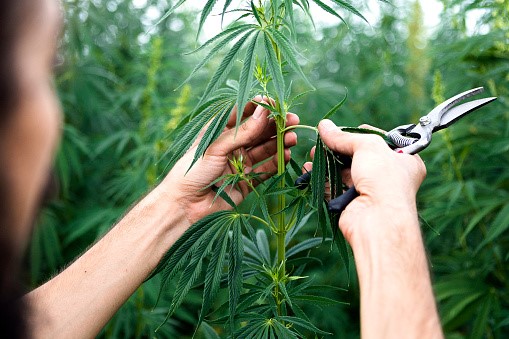
Harvest
A week before harvest, nutrient supply should be “flushed” out. This allows the crop to use up the nutrients in the medium such that they don’t find their way into your buds. The leaf may begin to yellow in the final week as the crop continues bud development by converting the resources into energy. To determine the readiness for harvest, observe the trichomes, preferably with a microscope. Clear trichomes mean less potency and too early for harvesting. A crop that is ready for harvest has milky white-amber trichomes and high potency. Waiting for long past the milky white trichomes reduces CBD concentration and sharply increases the psychoactive effects.
Harvesting employs the use of gardening shears or scissors to remove the buds. Be gentle while at it so as not to derange the potency of the trichomes.
Drying
Before drying and curing, trimming must take place. It could be wet trimming or dry trimming. Either is fine and largely depends on personal preference. The aim of trimming is not only to make your buds more visually appealing but also meant to collect leaves that surround the buds. These leaves are commonly known as “sugar leaves”. Sugar leaves are useful for hash making, extracts and can even be smoked. But their smoke is not the most pleasant.
With controlled humidity levels and temperatures, your cannabis should be able to dry in the same space they grew. Most growers dry for one to two weeks. Spreading the buds out accelerates the drying stage of the buds. For those that choose dry trimming, that is done after drying, but just before the curing stage.
Curing is a process that comes after drying. The goal is to cure the buds to get the perfect homegrown herb. Curing can be done in a dark space like a jar with low humidity. It is advisable to rout the container to remove the remaining moisture in the buds. This can be simply achieved by briefly opening and closing the jar once in a while. The curing process can last between days to weeks.
How Do I Store the Cured Buds?
A well-sealed container and jar should be able to store your treasures for as long as possible. Burp the jar once a week. Like a fine whiskey barrel, dry and cured buds are best stored in a cool place with ideal relative humidity. You don’t days and weeks of hard work to end in devastation.
So, are you psyched up to start growing your favorite strain? Hopefully, we offered some good tips to get you started.
MORE INDOOR CANNABIS GROWING TIPS, READ THESE...
A BEGINNERS GUIDE TO INDOOR MARIJUANA GROWING, CLICK HERE.
